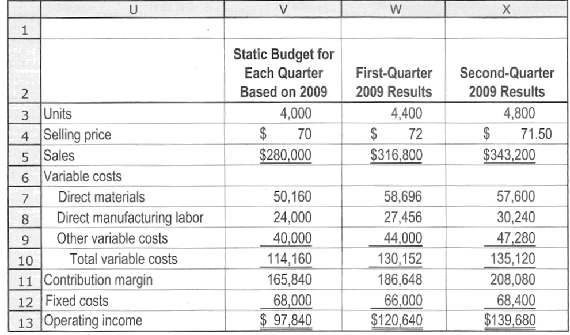Reference no: EM13326712
Comprehensive variance analysis. Sol Electronics, a fast-growing electronic device producer, uses a standard costing system, with standards set at the beginning of each year. In the second quarter of 2009, Sol faced two challenges: it had to negotiate and sign a new short term labor agreement with its workers' union, and it also had to pay a higher rate to its suppliers for direct materials. The new labor contract raised the cost of direct manufacturing labor relative to the company's 2009 Standards. Similarly, the new rate for direct materials exceeded the company's 2009 standards. However, materials were of better quality than expected, so Sol's management was confident that there would be as waste and less rework in the manufacturing process. They also speculated that the per-unit direct manufacturing labor cost might decline as a result of the materials' improved quality. At the end of the second quarter, Sol's CFO, Terence Shaw, reviewed the following results:


Shaw was relieved to see that the anticipated savings in material waste and rework seemed to have materialized. But, he was concerned that the union would press hard for higher wages given that actual unit costs came in below standard unit costs and operating income continued to climb. If you want to use Excel to solve this problem, go to the Excel Lab at www.prenhall.com/horngrenfcost13e and download the template for Problem 7-40.
1. Prepare a detailed variance analysis of the second-quarter results relative to the static budget. Show how much of the improvement in operating income arose due to changes in sales volume and how much arose for other reasons. Calculate variances that isolate the effects of price and usage changes in direct materials and direct manufacturing labor.
2. Use the results of requirement 1 to prepare a rebuttal to the union's anticipated demands in light of the second-quarter results.
3. Terence Shaw thinks that the company can negotiate better if it changes the standards. Without performing any calculations, discuss the pros and cons of immediately changing the standards.